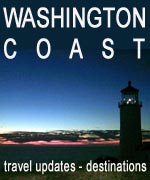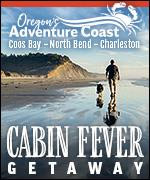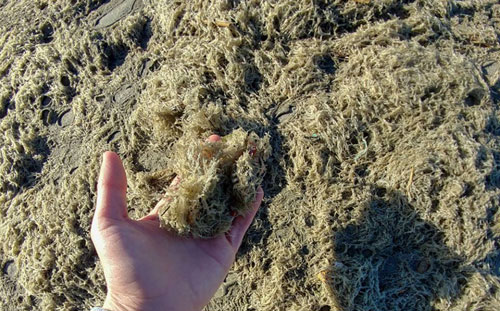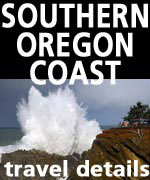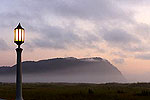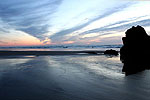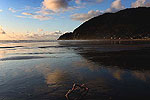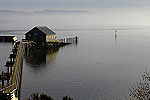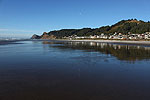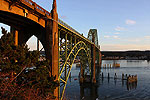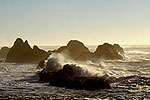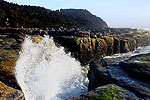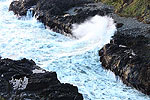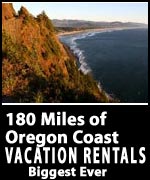When a 'Filament' Mystery Hit the Oregon Coast Last Decade
Published 05/20/22 at 9:35 PM PST
By Oregon Coast Beach Connection staff
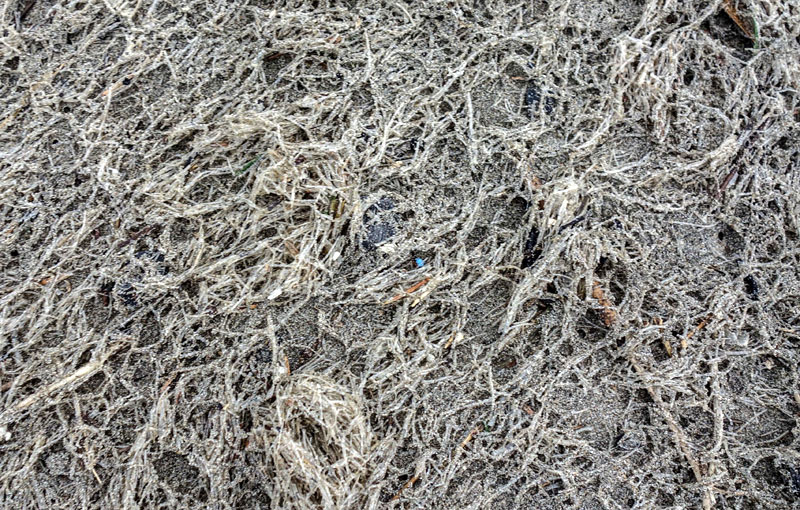
Includes exclusive listings; some specials in winter
In Cannon Beach:
Includes rentals not listed anywhere else
In Manzanita, Wheeler, Rockaway Beach:
Some specials for winter
In Pacific City, Oceanside:
Some specials for winter
In Lincoln City:
Some specials for winter
In Depoe Bay, Gleneden Beach:
Some specials for winter
In Newport:
Look for some specials
In Waldport
Some specials for winter
In Yachats, Florence
Some specials for winter
Southern Oregon Coast Hotels / Lodgings
Reedsport to Brookings, places to stay; winter deals
(Oregon Coast) – You may have run into this on beaches and wondered what they were. Now you'll know.
It's always a marvel when a new science mystery hits the Oregon coast, even if it is just a puzzled visitor on the beaches. Sometimes, however, even some of the experts get hit with something new. (Photos courtesy Seaside Aquarium / Tiffany Boothe)
That's what happened about nine years ago when CoastWatch volunteers began spotting something they hadn't seen before. February of 2013, and the volunteer organization CoastWatch was getting reports as always about what was different on Oregon beaches, and maybe what was luckily staying the same. It's their mission to keep an eye on changes around here.

Since about January of that year, some of the volunteers had been spotting little filament-like objects in the sands. They were clearly natural, but they did resemble bits of wiring to some degree. Each was tiny, about one to two centimeters long, which made the giant piles of them that much more extraordinary. CoastWatchers were stumped.
Finally, it was CoastWatch volunteer coordinator Fawn Custer (who had the position back then) who made the ID.
It turns out they were from a tiny creature known as the cellophane worm, which lives in the sands around the tideline all the time. This means periodically you will find them yourself.
They aren't the worms themselves, however. They are the casings of the cellophane worm, which has several rings around it and is covered in a tube as it sits below the sands. When the casings get knocked off them, they wind up onshore. Periodically, high surf events will dislodge a lot of them all at once, and you'll see rather large piles like this.
Scientifically they're known as Spiochaetopterus costarum, and when this happens the cellophane worm is just fine. It simply disappears beneath the sands again.
Back then, sand levels were building to larger-than-normal levels for a couple of years or more. Then winter storms started taking a lot of that sand away, skimming off more and more layers, and finding the little cellophane worm more easily. They suddenly discovered their new real estate in higher sand levels was risky, and they were in contact with the surface water.
Custer explained to Oregon Coast Beach Connection back then:
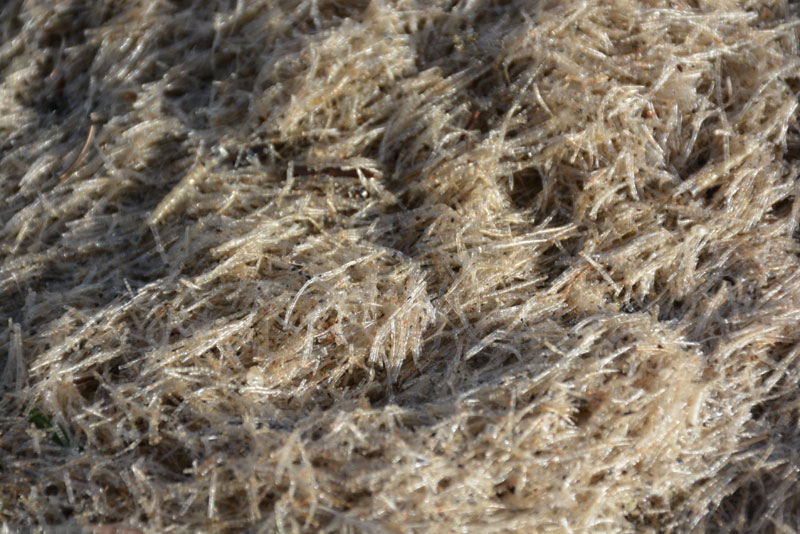
“The last few years the beaches have been building up sand, but this year because of more storm surges, it's been scouring out more sand,” Custer said. “They're always there anyway, just below the surface of the sand. But with the sand levels built higher up, and then more scouring out, they get exposed more.”
The animals are a little less than an inch long and about the width of hair. The casings themselves are about one inch long as well. Once onshore they dry out into those filaments or fibers and start being found.
“They feel like hair,” she said. “They're very pliable. You can squeeze them.”
Cellophane worms inhabit the sands just below the surface, where their tubes are close to the top or just above it, allowing them to suck in food. They eat the remnants of living matter in the ocean – stuff that's already dead.
Back then they were getting taken by surprise, and they occasionally do now and again still.
Once the tubes come off, the cellophane worm grows another by secreting a kind of goo that eventually hardens into a brand new tube.
Why so many? Custer said the populations of them were simply quite large back then. Those higher sand levels played a bad trick on them and left them vulnerable to 2013's sudden shift in more scouring. Winter sand levels were much lower in some of the previous years. During that time, you didn't see so many as they managed to keep ahead of the consistently lowering sand levels.
Back in 2013, however, they were so high up in the massive sand levels they just weren't prepared for all that storm action and more of them lost their casings.
Oregon Coast Hotels for finding these - South Coast Hotels - Where to eat - Maps - Virtual Tours
Cannon Beach Lodging
Nehalem Bay Lodgings
Manzanita Hotels, Lodging
Three Capes Lodging
Pacific City Hotels, Lodging
Lincoln City Lodging
Depoe Bay Lodging
Newport Lodging
Waldport Lodging
Yachats Lodging
Oregon Coast Vacation Rentals
Oregon Coast Lodging Specials
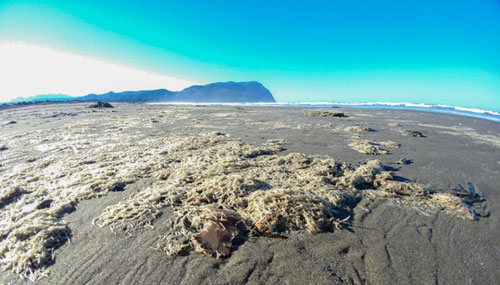
More About Oregon Coast hotels, lodging.....
More About Oregon Coast Restaurants, Dining.....
LATEST Related Oregon Coast Articles
Updates. For entire west coast: some kind of wave or set of waves are coming. Get off beaches. Weather, Sciences, events
Bandon Events: Bullards Beach Takes You to Oregon Coast Birds, Walks and Ship...
Aug 27 - 30: birds, walking the coast, lighthouses, shipwrecks
AV-8B Harrier II Jet to Land at N. Oregon Coast's Tillamook Air Museum
Tillamook Airport on Monday, August 4. Tillamook events. Rockaway Beach events. Lincoln City events
Lantern to Return to Oregon Coast Icon: Yaquina Bay Lighthouse in Newport Get...
Aug 11 sees the light coming back and the lighthouse open soon. History, Newport events
Early September and Oregon Coast's Second Summer: Rentals That Are Still Open...
Still a couple vacation rentals with availability but getting thin. Cannon Beach hotel reviews, hotel availability
Time-lapse of North Oregon Coast: Witness Changes at Cannon Beach, Seaside, M...
Seeing things shift and change at Wheeler, Neahkahnie, Oswald West, Seaside, Cannon Beach
Central Oregon Coast's Alsea Bay Under Clam Advisory Due to Saxitoxin
Not the typical paralytic shellfish poisoning. Sciences
Companion Star to Red Giant Found, Proof of Two Supernovae: Oregon Coast Astr...
Double star detonation found and Betelgeuse has a companion star. Sciences
Back to Oregon Coast
Contact Advertise on BeachConnection.net
All Content, unless otherwise attributed, copyright BeachConnection.net Unauthorized use or publication is not permitted





